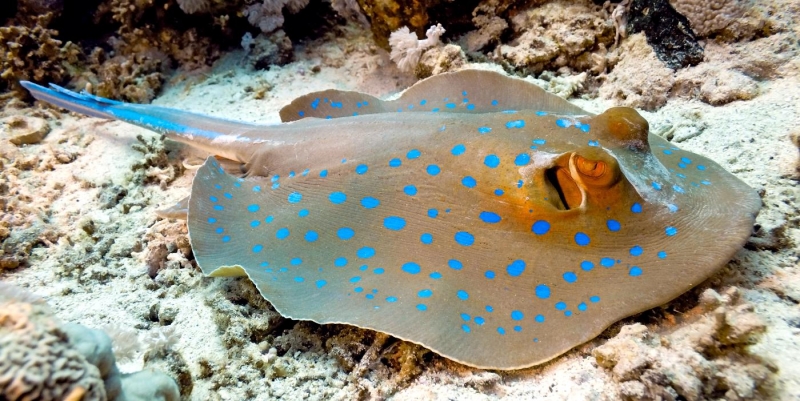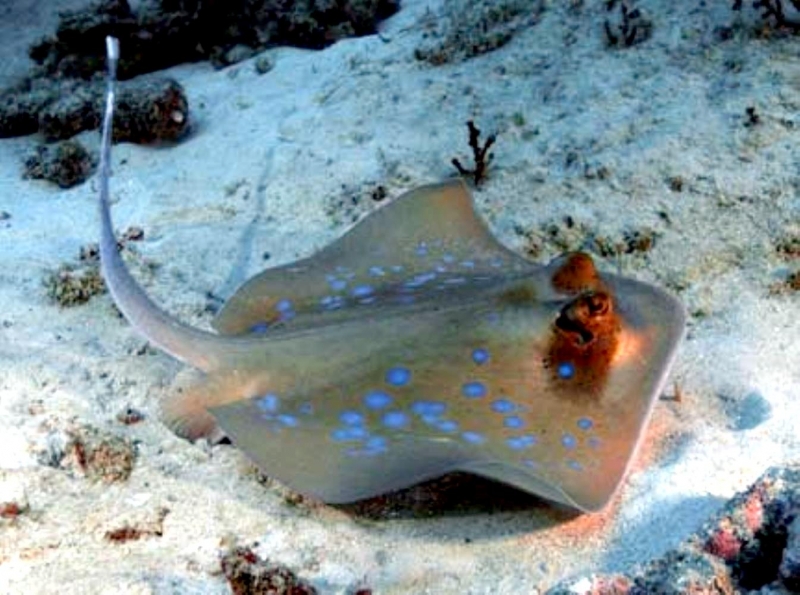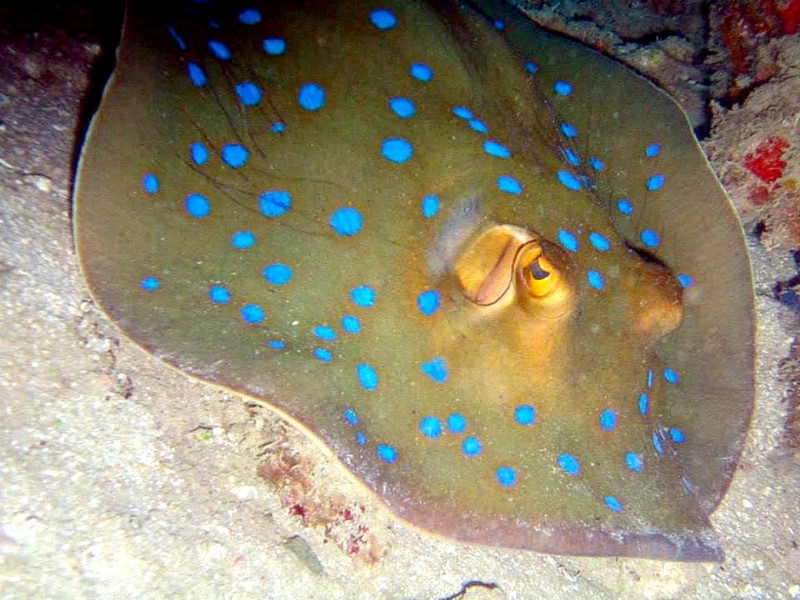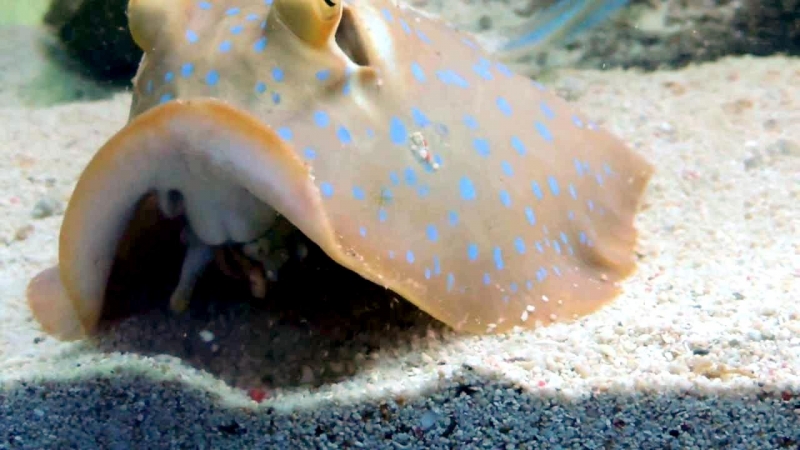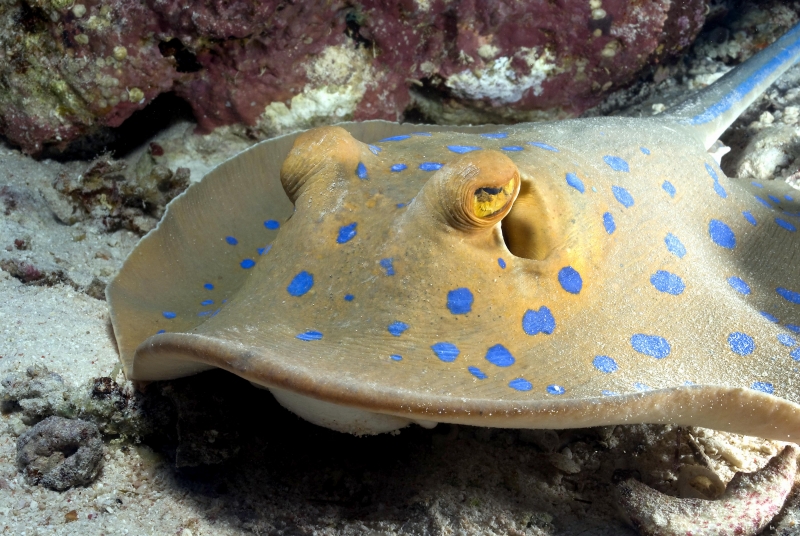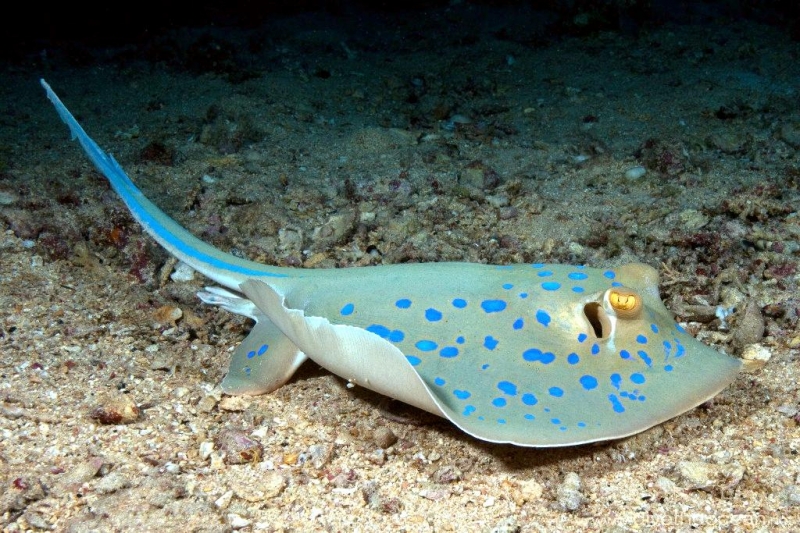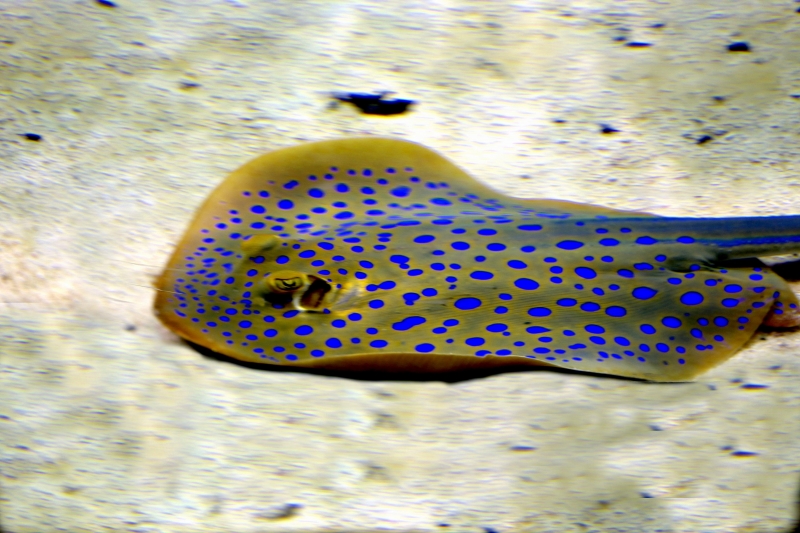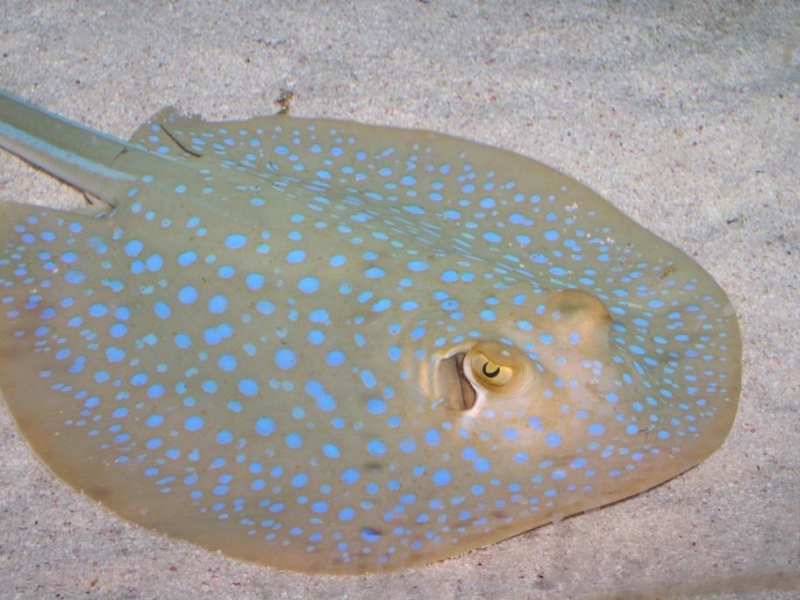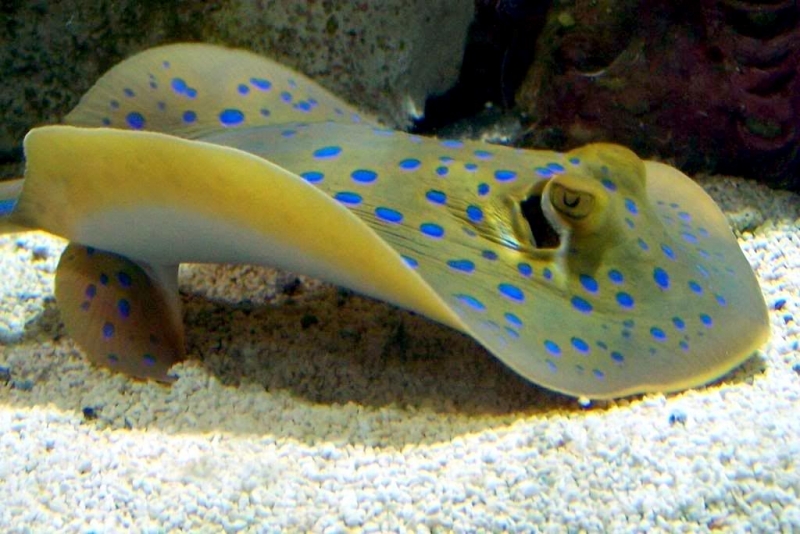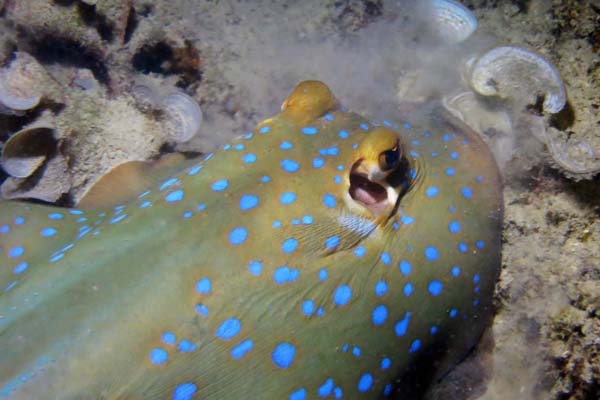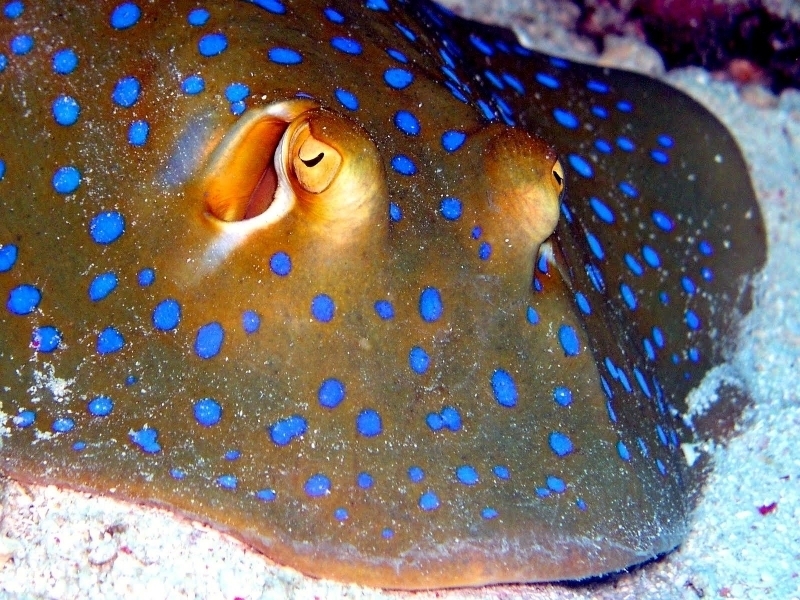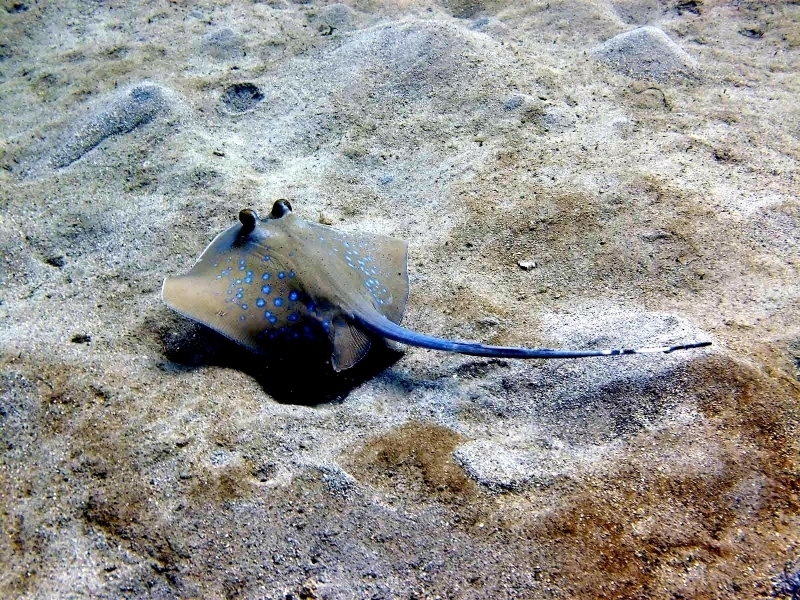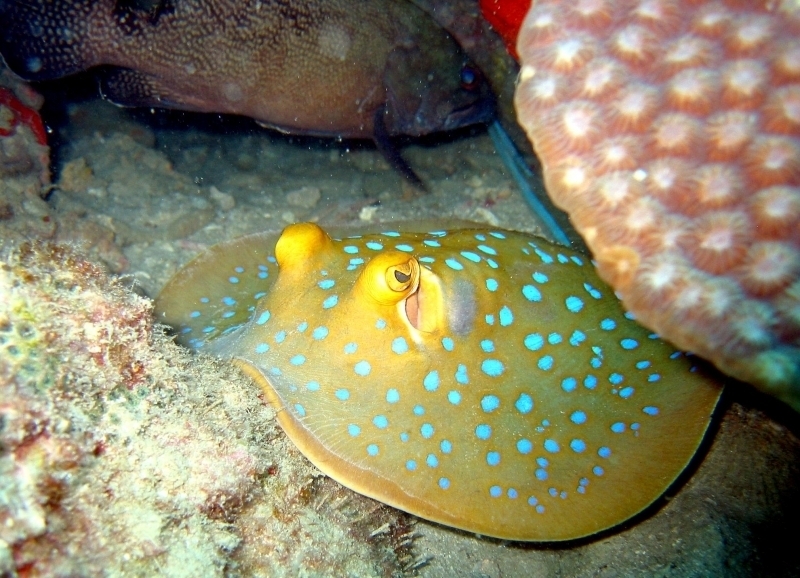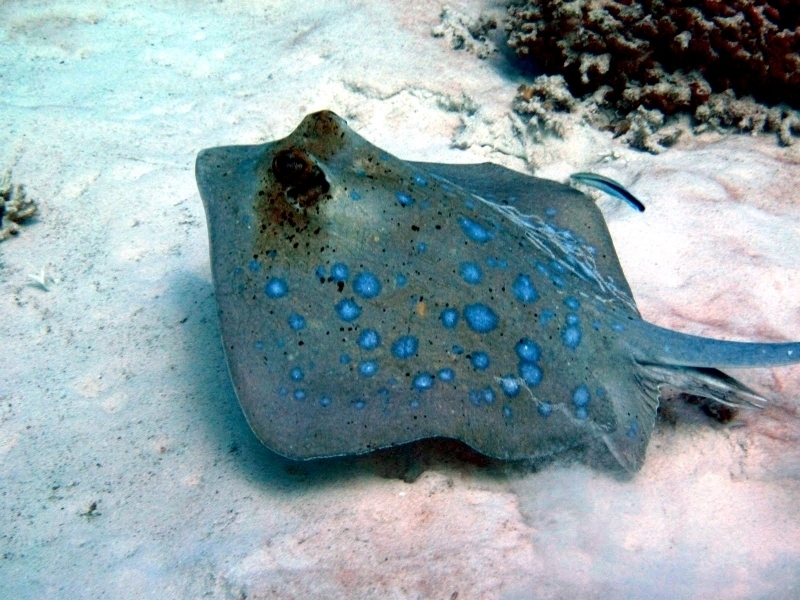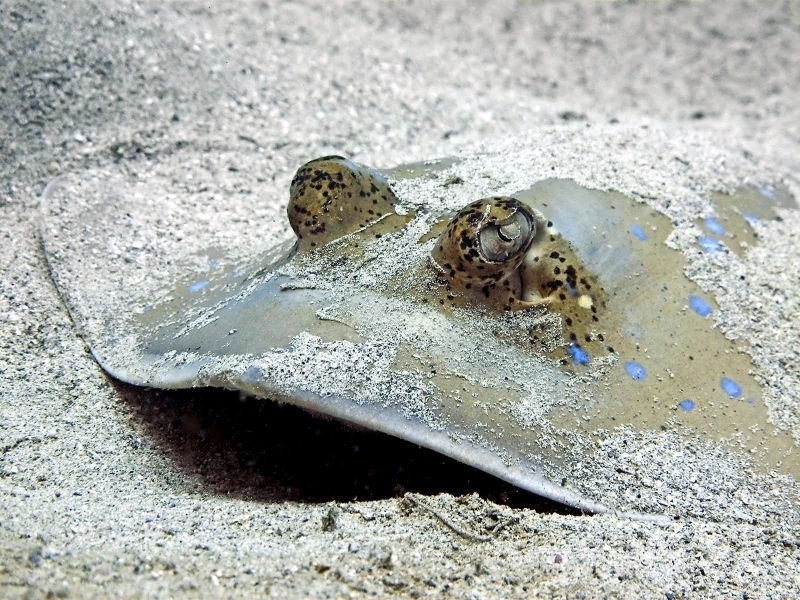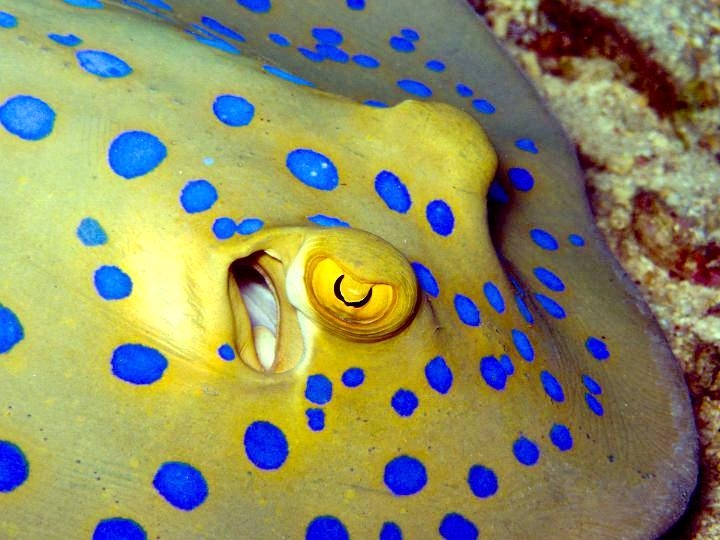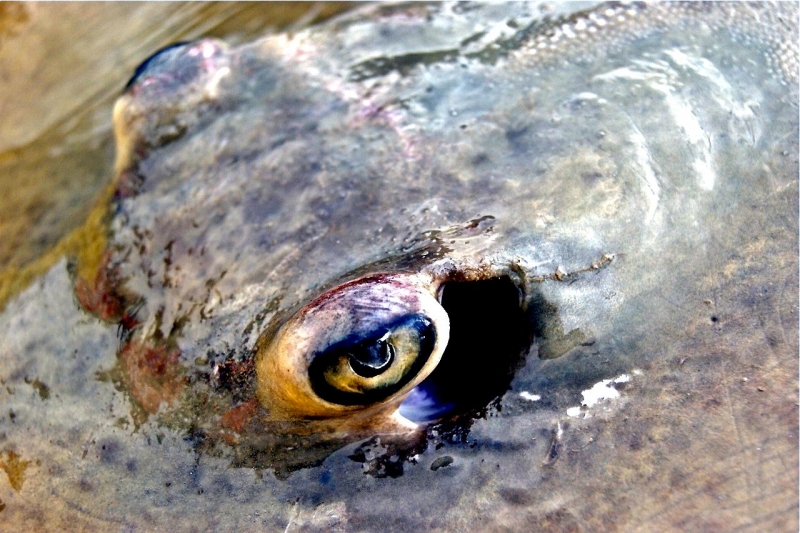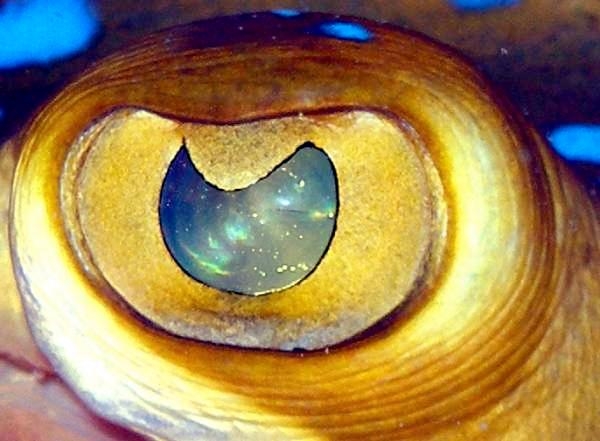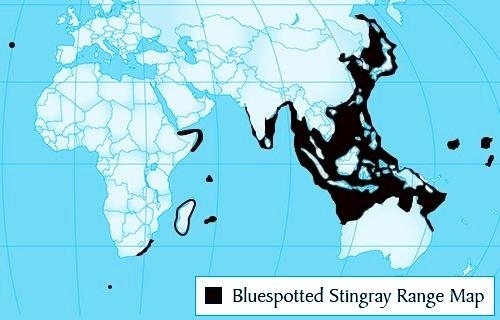“Taeniura lymma”
Blue-spotted Stingrays are colorful with large bright blue spots on an oval, elongated disc and blue side-stripes along their tails. Their snout is rounded and angular and the disc has broadly rounded outer corners. They have a short tapering tail that is less than twice their body length when intact, with a broad lower caudal fin-fold that extends to the tail tip. Their disc has no large thorns but does have small, flat denticles along their mid-back in adults. There is usually 1 medium-sized stinging spine on their tail found further from the base than most stingrays. They are gray-brown to yellow or olive-green to reddish-brown in color on their dorsal (upper) side, white on their ventral (under) side. They reach a maximum length about 70 centimeters. Blue-spotted Stingrays are found on sandy bottoms around coral reefs. These rays like to bury themselves just underneath the sand where they will feed on various invertebrates. They usually are found on shallow continental shelves; however, they have also been observed around coral rubble and shipwreck debris at depths of 20-25 meters deep. Divers and snorkelers will often detect this ray by its distinctive ribbon-like tail poking out from a crack in the coral. These rays are most abundant inshore. The Blue-spotted Stingray is a colorful stingray with distinct, large, bright blue spots on its oval, elongated body. The snout is rounded and angular with broad outer corners. The tail tapers and can be equal to or slightly less than the body length when intact. Its caudal fin is broad and reaches to the tip of the tail. At the tip of the tail are two sharp venomous spines which permit this ray to strike at enemies forward of its head. The tail of the Blue-spotted Stingray can be easily recognized by the blue side-stripes found on either side. It has large spiracles that lie very close to its large eyes. It can grow to a disc diameter of about 25 centimeters but has been reported as being as large as 95 centimeters in diameter. The mouth is found on the underside of the body along with the gills. Within the mouth are two plates, which are used for crushing the shells of crabs, prawns & mollusks. When Blue-spotted Stingrays are born, they hatch out of egg cases pale-gray or brown and are spotted with black or rusty-red and white. These patterns & markings are distinct to each individual within a litter. As adults, they are olive-gray or gray-brown to yellow dorsally and white ventrally with numerous blue spots. When born, the young Blue-spotted Stingrays are about 9 centimeters long and can grow to around 25 centimeters as adults. The young are born out of egg cases with a soft tail that is encases in a thin layer of skin to prevent injury to the mother during birth. The skin is eventually lost and the tail is used as a protective mechanism.
Blue-spotted Stingrays are found around coral reefs in a depth range up to 20 meters. They are only rarely found buried under the sand. In the Indo-West Pacific, they are found in the Red Sea and off East Africa to the Solomon Islands, north to southern Japan and south to northern Australia. Blue-spotted Stingrays migrate in groups into shallow sandy areas during the rising tide to feed on mollusks, worms, shrimps and crabs and disperse at low tide to seek shelter in caves and under ledges. Blue-spotted Stingrays are ovoviviparous. Distinct pairing with embrace and bear up to 7 young at a time. The eggs are retained within the body of the female in a brood chamber where the embryo develops, receiving nourishment from a yolk sac. This is the method of reproduction for the “live-bearing” fishes where pups hatch from egg capsules inside the mother’s uterus and are born soon afterward. Blue-spotted Stingrays are ovoviviparous. This means that the embryo is nourished by the yolk and the eggs are retained within the female until they hatch. The ray produces about 7 live young in every litter. Each juvenile is born with the distinctive blue markings of its parents in miniature. In courtship, the male often follows the female with his acutely sensitive nose close to her cloaca in search of a chemical signal that the female will emit. Courtship usually includes some sort of nibbling or biting of the disc. The teeth of the male are used to hold the female in place during population. The male fertilizes the female via internal fertilization through the use of their claspers. The breeding season is usually in late spring through the summer and gestation can be anywhere from 4 months to a year. This species is highly vulnerable to population collapses from over-fishing, habitat loss and the pet trade. They also have a long gestation period making them even more susceptible to population collapse. Blue-spotted Stingrays may be found alone or in small groups, mostly in shallow waters over reef flats. They are rather shy and will usually swim away rapidly if disturbed by divers. When threatened, Blue-spotted Stingrays will use their venomous tail to inject poison. The venom is produced & delivered into narrow groves running lengthwise along the underside of the stinger. The entire structure is covered by a thin layer of skin which when broken, releases its venom into its victim. If the stingray loses one of its barbs while defending itself, it immediately begins to grow a new one. Stingrays shed and re-grow their spines on a regular basis regardless of whether they use them. Propulsion of Blue-spotted Stingrays is achieved using its pectoral fins which make up the bulk of its oval, disc shaped body. Blue-spotted Stingrays have fin muscles which are found throughout the entire length of the fin. All of these muscles are active except at low speeds when they are not needed to propel the body through water.
Blue-spotted Stingrays use electroreception to communicate with other members of its species. Blue-spotted Stingrays use strucutres called the “Ampullae of Lorenzini”, which allow them to detect slight electrical impulses within the water. This electroreception is often used as a means of recognizing members of the same species. During high tide, it migrates in groups into shallow sandy areas of tidal flats to feed on sand worms, shrimps, hermit crabs and small fishes. At low tide it recedes back into the ocean, usually alone to hide in the coral crevices of the reef. Blue-spotted Stingrays will feed on many things such as bony fish, crabs, shrimp, polychaetes and other benthic invertebrates. Since the mouth is located on the underside of the body, food is trapped by pressing the prey into the substrate with their discs. The food is then directed into the mouth by maneuvering the disc over the prey. Blue-spotted Stingrays can detect its prey through an electroreceptor system. The nostrils are partly covered with a broad fleshy lobe, known as the inter-nasal flap. This is covered in sensory pores and extends to the mouth. These pores form part of the “Ampullae of Lorenzini” (the electroreception system). This electroreceptor system can detect electrical fields produced by the prey. This electroreceptor system cannot only be used to detect prey but can also be used to detect predators and other members of the same species.


